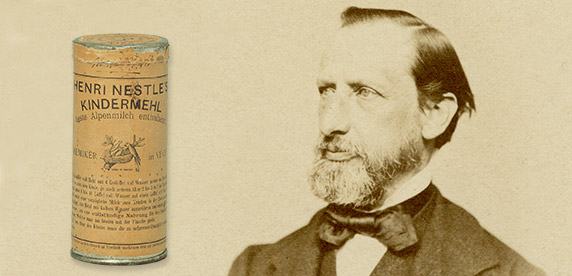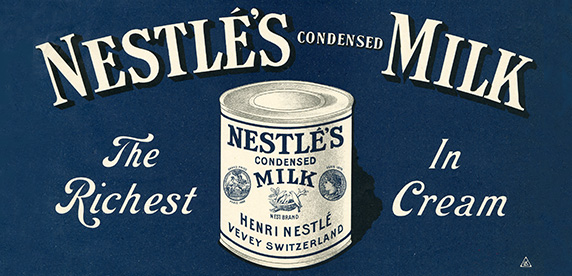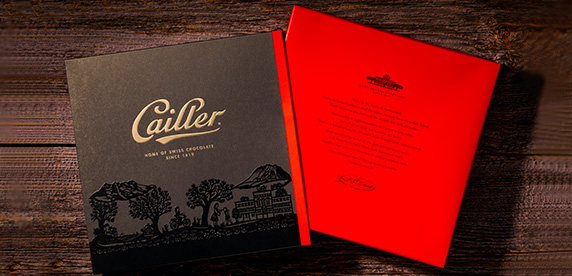‘Good Food, Good Life’: Celebrating 150 years of Nestlé
2016 is a landmark year in the history of Nestlé: our 150th anniversary. During one of the world’s biggest sports event in Rio de Janeiro, Nestlé is celebrating its 150 years with an exhibition at the House of Switzerland. Explore our rich history and join us as we celebrate our passion for nutrition and look ahead to another 150 years of Good Food, Good Life.
It’s 1867 in Switzerland, and a premature baby cannot breastfeed, which is worrying in an era when many infants die of malnutrition due to a lack of effective breast milk alternatives. Henri Nestlé learns about the case and feeds the child his new ‘farine lactée’ infant food. It is the only product that the boy can digest, and he survives.

Word of Nestlé’s success spreads rapidly, and through determination, commitment and a pioneering spirit he builds a thriving business. His life-saving innovation is the model for all those that follow throughout Nestlé’s 150 years, which show the company’s skill in meeting and anticipating consumers’ changing needs.
Worldwide, people now consume more than one billion servings of Nestlé products per day. The company operates in over 189 countries and employs almost 335,000 people. It’s a far cry from the small-scale business that Henri Nestlé founded in Vevey, Switzerland. But Nestlé still embraces his values, his famous ‘Nest’ logo, and its headquarters in the city.
Growing-up in an industrial age
Nestlé’s story proper begins in 1866, with the foundation of the Anglo-Swiss Condensed Milk Company, which launched Europe’s first condensed milk. This was another life-saving product in an era before refrigeration, when fresh milk spoilt easily in transit. In 1905, Anglo Swiss merged with Nestlé’s.
The company’s early success was due to its investment in science-based products and modern factories to produce them efficiently. Railways and steamships gave Nestlé access to new urban markets worldwide, and it made savvy use of modern advertising media – newspapers, magazines, billboards – to educate people on product benefits. Namely, nutrition, quality, safety, affordability and taste.

One other benefit that Nestlé products have always offered is convenience, and this became especially important after World War Two, when more women entered the workplace, and people demanded foods that were easy to prepare.
By 1938, people could ‘start the day with a Nescafé’, the world’s first great-tasting instant coffee, simply by adding hot water. By 1948 they could enjoy Nesquik, a cocoa-based powder that dissolves easily in cold milk. And by 1957, they could finish the day with Maggi pasta ‘ready meals’ in cans, which were hugely successful.
Lightening the load in the kitchen
Cans weren’t new, but nutritious meals in cans were, and this quickly became a high-growth segment for Nestlé. Such foods had a long shelf life, were easy to heat then eat, and you could even enjoy them cold. Cans were also simple to transport, so you could consume them on a camping trip, for instance, along with your cup of Nescafé. Such products helped to shape our modern world, and life would never be the same.

From the 1960s, you could also enjoy the convenience of Nestlé frozen foods and ice creams, which the company entered as domestic fridges and freezers grew in popularity. In 1986 Nestlé went one step further by creating its own breakthrough Nespresso system, which changed the way we experience premium coffee.
Nespresso is another Nestlé innovation that enhances people’s quality of life, everywhere, every day. In doing so it brings pleasure, an emotion we associate strongly with chocolate. Nestlé first entered this key business in 1904 when it took on export sales for Peter & Kohler, later adding brands such as Cailler and KitKat.

Targeted nutrition: the future of food
Today Nestlé business spans beverages, waters, dairy, confectionery, petcare, even skincare. In 2011 the company extended its leadership in Nutrition, Health and Wellness by creating Nestlé Health Science, to develop nutritional healthcare products that target optimal brain health, for example, or healthy aging.

Such innovations will help Nestlé address the global challenges of malnutrition, growing and aging populations and obesity. This same passion for nutrition underpins a commitment to improve products by reducing salt, sugar and saturated fats, and fortify them with vitamins, minerals, vegetables and wholegrains.
As Nestlé’ celebrates 150 years, the company holds true to its conviction that to prosper in the long-term, it must create value for shareholders, the communities where it operates, and wider society. It’s a conviction that enshrines Henri Nestlé’s values, as Nestlé looks forward to the next 150 years of ‘Good Food, Good Life’.
